Smartphone photography is increasingly rivaling and, in many
contexts, eclipsing DSLR photography, especially for everyday
users. Modern smartphones use advanced computational
photography, powerful AI enhancements, and high-quality
lenses, making them more convenient and capable than ever.
For most casual and social sharing purposes, smartphones now
meet or exceed user expectations, significantly reducing the
necessity for a dedicated DSLR.
 You should always strive to do your best -- and show your
best. Great photography is not necessarily about equipment,
but how you approach capturing an image. Knowing the basic
controls of YOUR camera helps you capture what you see.
You should always strive to do your best -- and show your
best. Great photography is not necessarily about equipment,
but how you approach capturing an image. Knowing the basic
controls of YOUR camera helps you capture what you see.
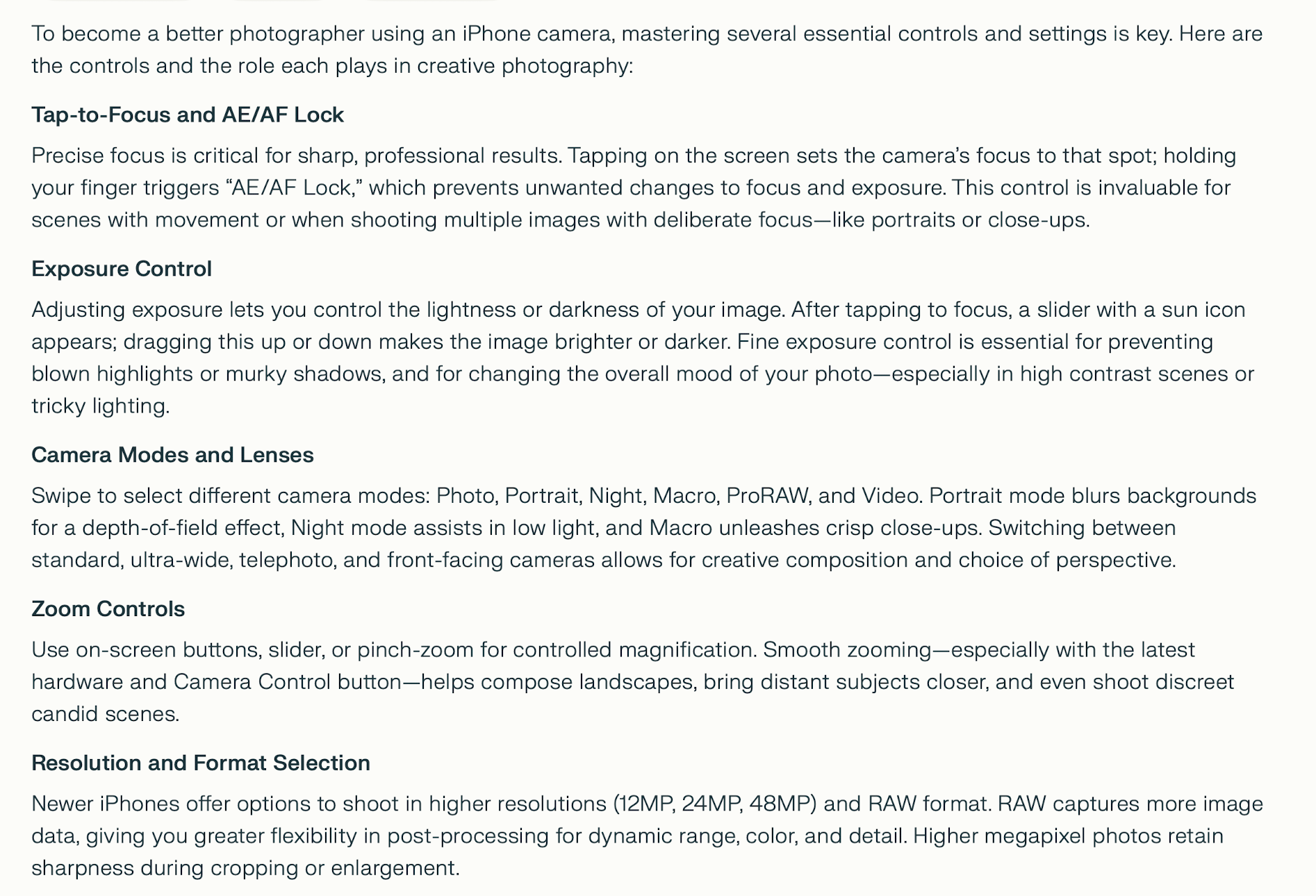
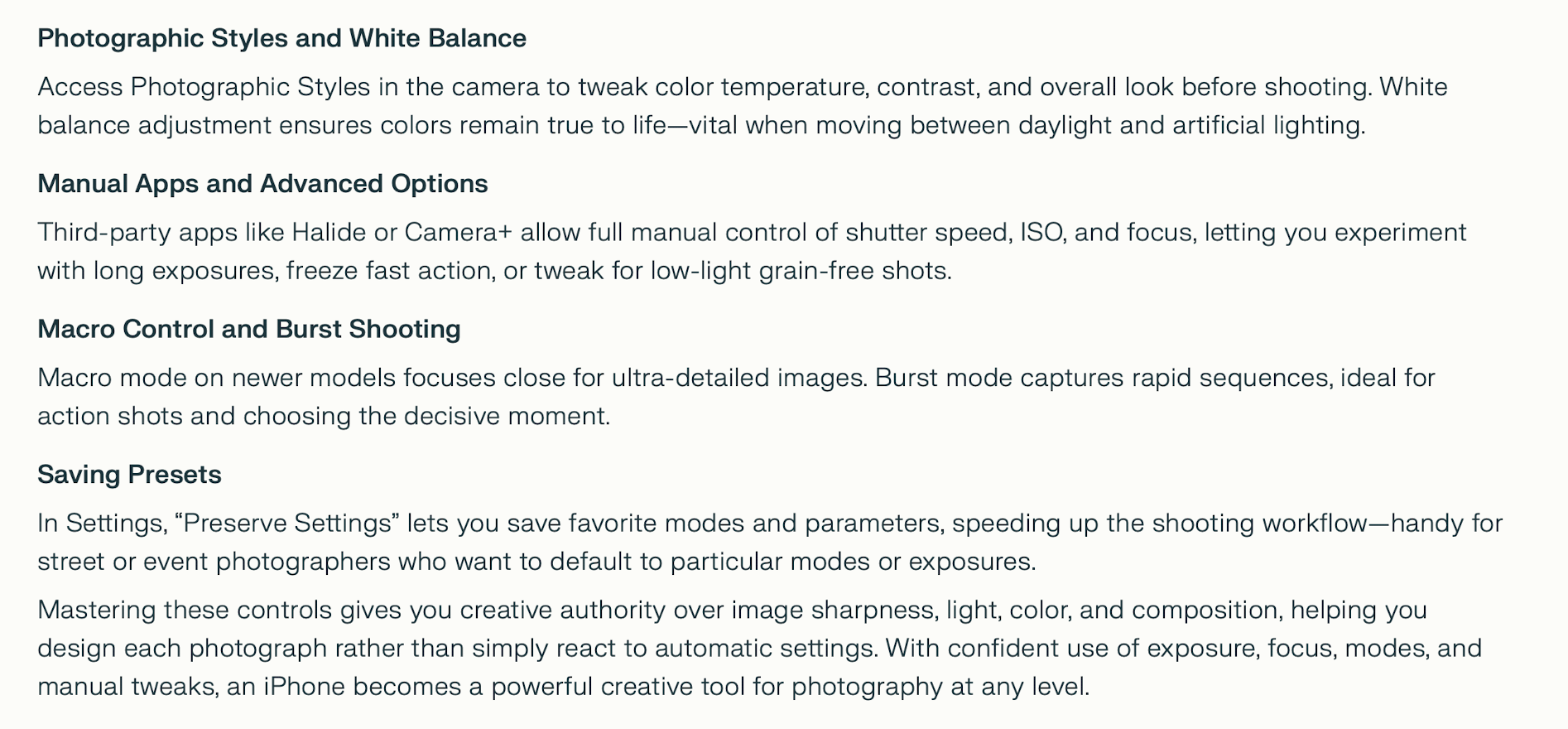 iPhone camera basics
https://support.apple.com/guide/iphone/camera-basics-iph263472f78/ios
A Beginner’s Guide to Smartphone Photography (Android)
https://www.makeuseof.com/smartphone-photography-beginner-guide/
iPhone camera basics
https://support.apple.com/guide/iphone/camera-basics-iph263472f78/ios
A Beginner’s Guide to Smartphone Photography (Android)
https://www.makeuseof.com/smartphone-photography-beginner-guide/
The most basic tools (with any camera) are:
1. Choosing Where to Focus (Tap)
2. Locking Focus (Tap & Hold)
3. Exposure (Slide Finger to lighten or darken)
4. Locking Exposure
Demo on an iPhone
Use iPhone camera tools to set up your shot
https://support.apple.com/guide/iphone/set-up-your-shot-iph3dc593597/ios
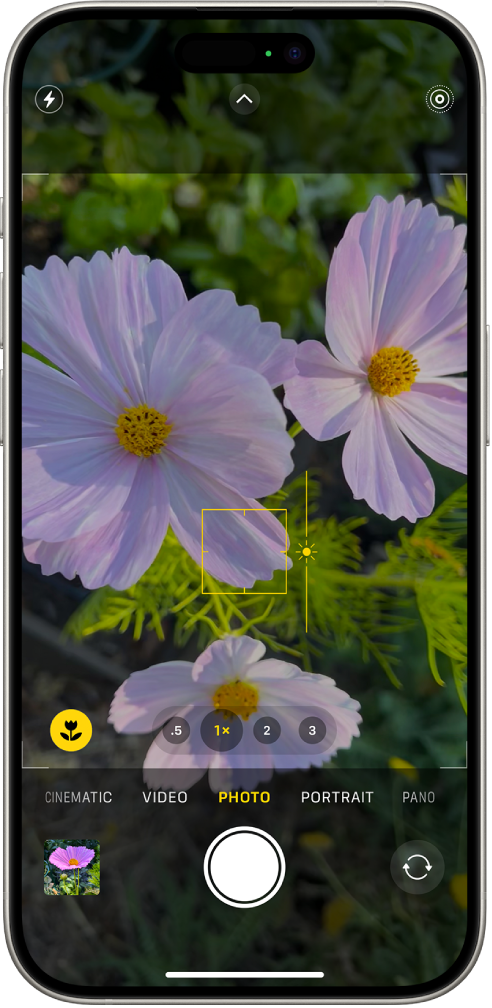 iPhone Camera basics
https://support.apple.com/guide/iphone/camera-basics-iph263472f78/ios
https://support.apple.com/en-us/HT210571
https://iphonephotographyschool.com
iPhone Camera Features For Perfect Focus (9 min)
https://www.youtube.com/watch?v=JBdH-bttN-c
https://iphonephotographyschool.com/
How To Set The Correct Exposure For Stunning iPhone Photos (19 min)
https://www.youtube.com/watch?v=7h1qFnsCTzE
https://iphonephotographyschool.com/iphone-photography-tips/
https://iphonephotographyschool.com/iphoneography/
Moment Pro Camera App (control Shutter Speed and more)
https://apps.apple.com/us/app/pro-camera-by-moment/id927098908
Pro Camera by Moment is the manual camera app that gives you
full creative control and professional-level performance,
all at an affordable price. It brings us closer to what we
love about our DSLR and mirrorless cameras - exposure
controls, precise focus, rich colors, smooth video, crisp
audio - without being complicated.
Moment Lenses (and cases) for smart phones
https://www.shopmoment.com/mobile-lenses
iPhone EXIF Data
iPhone Camera basics
https://support.apple.com/guide/iphone/camera-basics-iph263472f78/ios
https://support.apple.com/en-us/HT210571
https://iphonephotographyschool.com
iPhone Camera Features For Perfect Focus (9 min)
https://www.youtube.com/watch?v=JBdH-bttN-c
https://iphonephotographyschool.com/
How To Set The Correct Exposure For Stunning iPhone Photos (19 min)
https://www.youtube.com/watch?v=7h1qFnsCTzE
https://iphonephotographyschool.com/iphone-photography-tips/
https://iphonephotographyschool.com/iphoneography/
Moment Pro Camera App (control Shutter Speed and more)
https://apps.apple.com/us/app/pro-camera-by-moment/id927098908
Pro Camera by Moment is the manual camera app that gives you
full creative control and professional-level performance,
all at an affordable price. It brings us closer to what we
love about our DSLR and mirrorless cameras - exposure
controls, precise focus, rich colors, smooth video, crisp
audio - without being complicated.
Moment Lenses (and cases) for smart phones
https://www.shopmoment.com/mobile-lenses
iPhone EXIF Data
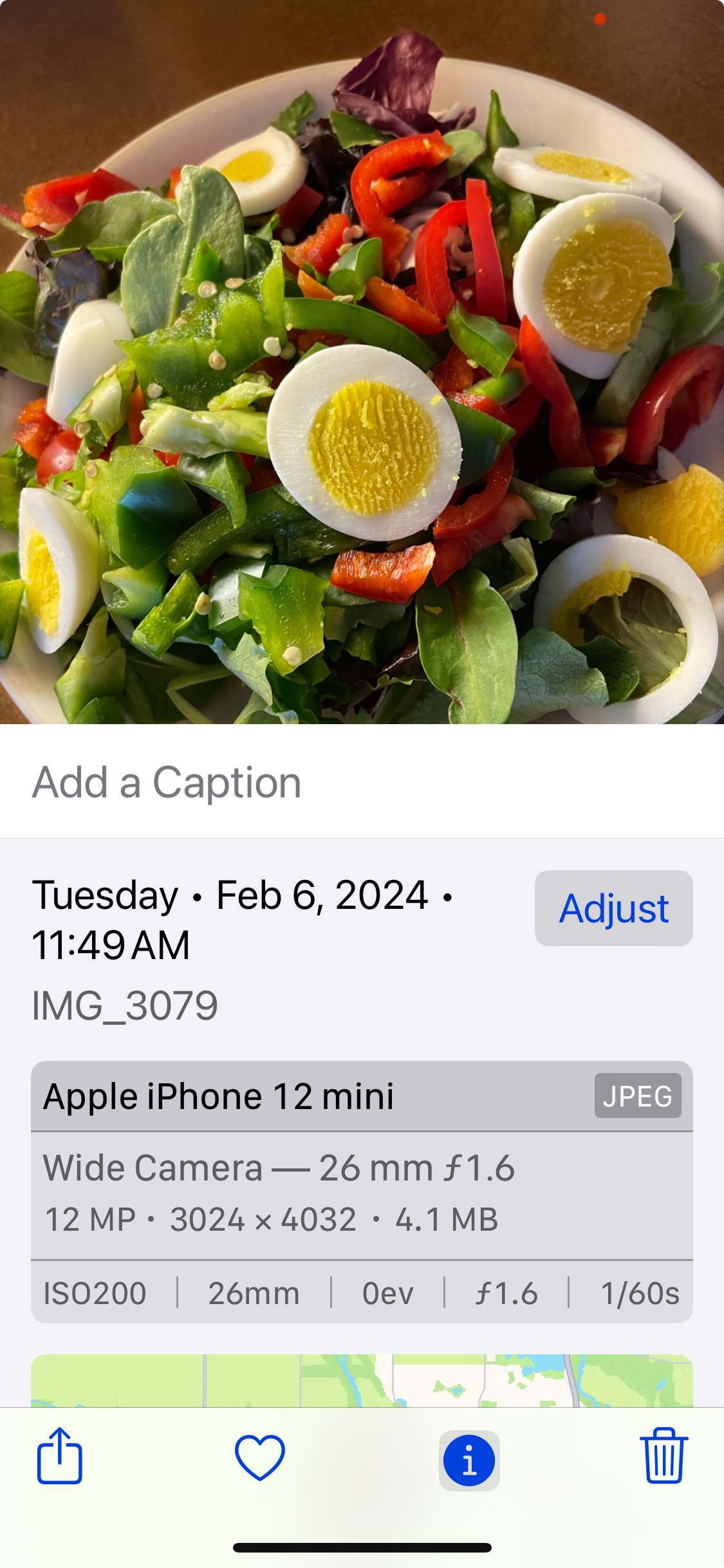
Photo Assignment - Master Manual Focus and Focus Lock
In addition to creating compelling images of fall colors,
winter bareness, new spring growth, or anything else you
choose, create images with intentional focus. You can't
just point and shoot. For example:
Using critical focus, create an image that draws people to
concentrat on what you want them to see. In the image below
the photographer wants the eyes (not the hands) to be in
sharp focus. Be creative. You can use focus creatively!
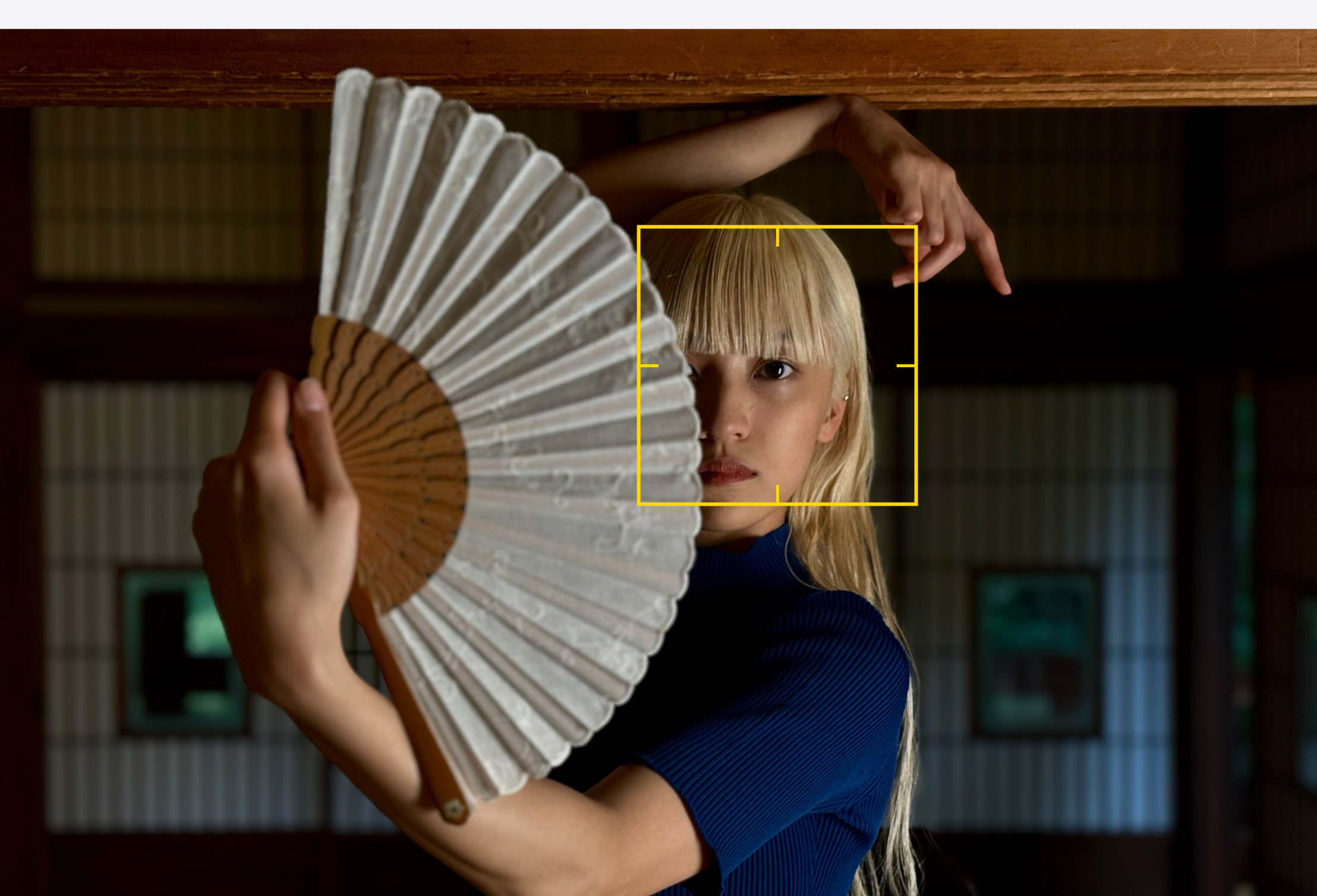
Basic Photography: A Set of Exercises
http://teeksaphoto.org/Writing/BasicPhotoExercises.html
Digital Photography Tutorials
http://www.cambridgeincolour.com/tutorials.htm
Book Recommendation
John Berger
About Looking
Pantheon (1980)
ISBN: 0679736557
As a novelist, art critic, and cultural historian, John
Berger is a writer of dazzling eloquence and arresting
insight whose work amounts to a subtle, powerful critique of
the canons of our civilization. In About Looking he explores
our role as observers to reveal new layers of meaning in
what we see. How do the animals we look at in zoos remind us
of a relationship between man and beast all but lost in the
twentieth century? What is it about looking at war
photographs that doubles their already potent violence? How
do the nudes of Rodin betray the threats to his authority
and potency posed by clay and flesh? And how does solitude
inform the art of Giacometti? In asking these and other
questions, Berger quietly -- but fundamentally -- alters the
vision of anyone who reads his work.
sam.wormley@icloud.com
You should always strive to do your best -- and show your best. Great photography is not necessarily about equipment, but how you approach capturing an image. Knowing the basic controls of YOUR camera helps you capture what you see.

iPhone camera basics https://support.apple.com/guide/iphone/camera-basics-iph263472f78/ios A Beginner’s Guide to Smartphone Photography (Android) https://www.makeuseof.com/smartphone-photography-beginner-guide/
iPhone Camera basics https://support.apple.com/guide/iphone/camera-basics-iph263472f78/ios https://support.apple.com/en-us/HT210571 https://iphonephotographyschool.com iPhone Camera Features For Perfect Focus (9 min) https://www.youtube.com/watch?v=JBdH-bttN-c https://iphonephotographyschool.com/ How To Set The Correct Exposure For Stunning iPhone Photos (19 min) https://www.youtube.com/watch?v=7h1qFnsCTzE https://iphonephotographyschool.com/iphone-photography-tips/ https://iphonephotographyschool.com/iphoneography/ Moment Pro Camera App (control Shutter Speed and more) https://apps.apple.com/us/app/pro-camera-by-moment/id927098908 Pro Camera by Moment is the manual camera app that gives you full creative control and professional-level performance, all at an affordable price. It brings us closer to what we love about our DSLR and mirrorless cameras - exposure controls, precise focus, rich colors, smooth video, crisp audio - without being complicated. Moment Lenses (and cases) for smart phones https://www.shopmoment.com/mobile-lenses iPhone EXIF Data

